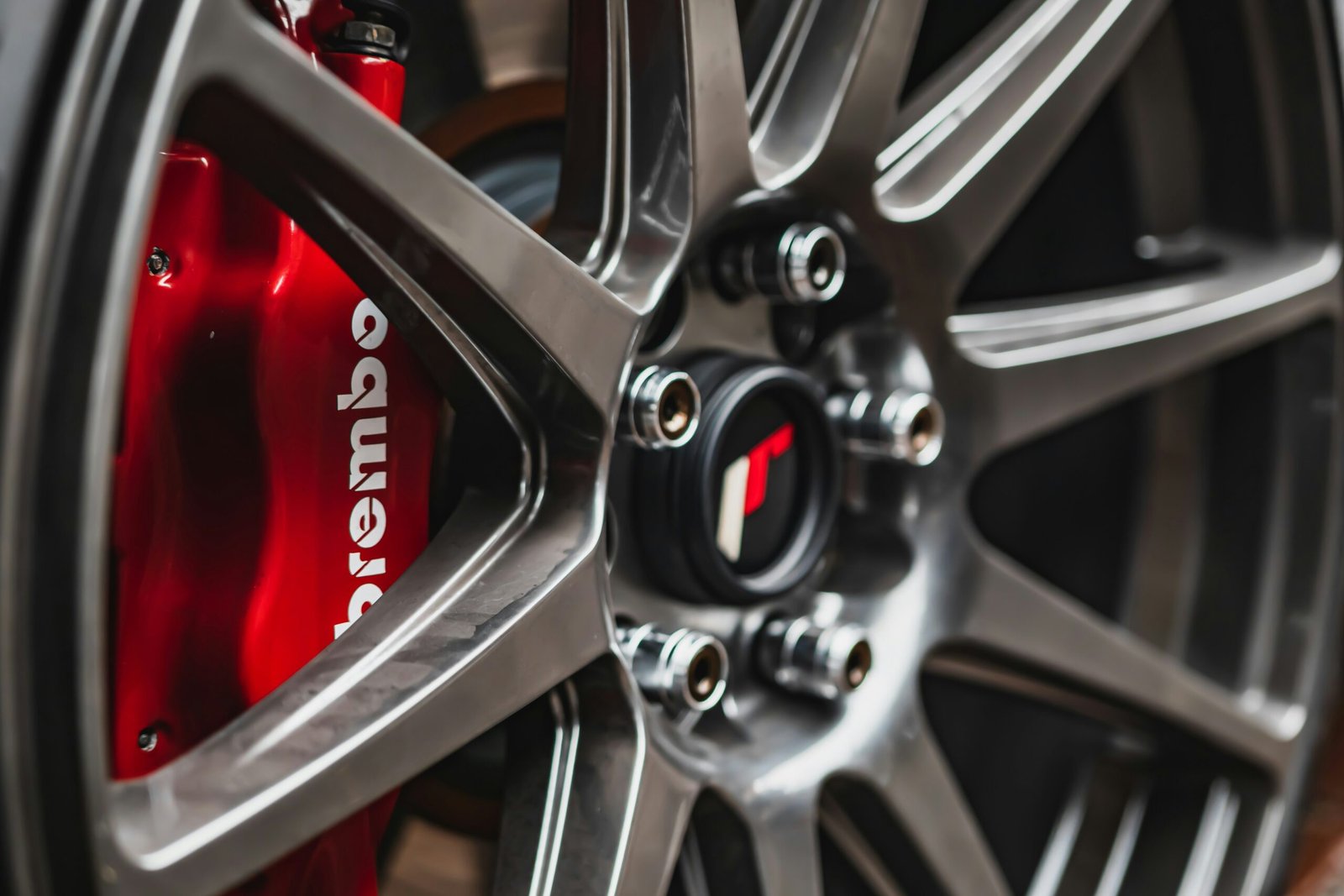Introduction to Electric Vehicles and Their Parts
Electric vehicles (EVs) represent a transformative shift within the automotive industry, marked by the increasing emphasis on sustainability, energy efficiency, and innovative technology.
With growing environmental concerns, consumers and manufacturers alike are gravitating towards EVs as a viable alternative to traditional internal combustion engine vehicles.
This paradigm shift is not merely about the vehicles themselves, but also about the critical components that make these advanced automobiles operational.
The parts used in electric vehicles are fundamentally different from those found in conventional vehicles, necessitating a comprehensive understanding of their significance.
Among the various components of an EV, the battery system, electric motor, and power electronics play pivotal roles.
The battery is typically the most significant contributor to an EV’s performance, range, and overall efficiency.
Innovations in battery technology, such as lithium-ion and solid-state batteries, are essential to enhance energy density and longevity, which in turn drives consumer adoption.
Electric motors, responsible for converting electrical energy into mechanical power, have also seen advancements that improve responsiveness and reduce energy losses.
In addition, power electronics are crucial for managing energy distribution and ensuring the overall efficiency of electric vehicles.
These components facilitate the conversion of direct current (DC) from the battery to alternating current (AC) for the motor, and vice versa during regenerative braking.
As manufacturers continue to explore new materials and designs, the evolution of EV parts will play a key role in enhancing the performance and sustainability of electric vehicles.
As a result, understanding the intricacies of these components is vital for not only manufacturers striving for enhanced production but also for consumers aiming to make informed purchasing decisions.
The growing market for EVs intertwined with the demand for high-quality parts indicates a promising future for electric vehicles, significantly impacting the global automotive landscape.
Advancements in Battery Technology
Recent advancements in battery technology are pivotal in shaping the future of electric vehicles (EVs) and invigorating the export from India.
A significant breakthrough in this domain is the development of solid-state batteries. Unlike traditional lithium-ion batteries, solid-state batteries utilize solid electrolytes, which enhances safety by reducing the risk of fires and increases energy density.
This innovation allows electric vehicles to achieve longer ranges while minimizing weight, directly addressing two of the most pressing concerns for consumers.
Increased energy density is another area where significant progress has been made.
Manufacturers are working to develop batteries that can store more energy in a smaller space, which not only improves vehicle range but also reduces the overall weight of the battery pack.
This is crucial in making electric vehicles more competitive with their internal combustion engine counterparts.
As energy storage technology advances, it will facilitate longer driving distances on a single charge, thereby expanding EV adoption across diverse markets.
A faster charging technology is also emerging as a key feature in the EV landscape.
Innovations in battery chemistry and architecture now enable charging times to be significantly reduced, positioning electric vehicles as practical choices for the average consumer.
With some developments allowing for charging capabilities that can replenish about 80% of battery capacity in just 30 minutes, the perceived inconvenience associated with electric vehicle ownership diminishes.
This progress is imperative for companies in the automotive sector looking to tap into the lucrative potential of the market, including the export from India.
Moreover, these advancements in battery technology are not only expected to enhance vehicle performance and range but also have implications for the overall cost structure.
As production scales and technology matures, the cost of batteries will likely drop, making electric vehicles more accessible to a broader audience.
This trend will ultimately support the growth of the electric vehicle ecosystem and could significantly increase the viability of EV exports from India.
The Rise of Lightweight Materials
The automotive industry is witnessing a transformative shift towards the utilization of lightweight materials in the production of electric vehicle parts.
This trend is primarily driven by the necessity to enhance vehicle efficiency and performance while reducing overall energy consumption.
In particular, materials such as aluminum, carbon fiber, and advanced composites have emerged as frontrunners in this evolution.
Aluminum is widely recognized for its favorable properties, including a high strength-to-weight ratio, resistance to corrosion, and excellent recyclability.
These attributes make it an optimal choice for electric vehicle components such as body panels and structural elements.
By replacing heavier materials like steel, manufacturers can effectively reduce the weight of the vehicle, which is crucial for improving the driving range of electric vehicles.
A lighter vehicle requires less energy to operate, resulting in decreased energy consumption and an overall boost in efficiency.
Carbon fiber, the next step in lightweight material innovation, is emerging as a game changer in electric vehicle design.
With its exceptional strength and lightness, carbon fiber is being incorporated into chassis components and parts that require enhanced stiffness without the accompanying weight.
While this material is currently more expensive than traditional steel or aluminum, advancements in manufacturing processes are gradually lowering production costs, paving the way for broader adoption.
Furthermore, advanced composites blend various materials to capitalize on the strengths of each component.
These composites can be engineered to meet specific performance and safety requirements, providing manufacturers with the flexibility to innovate while adhering to safety standards.
As these lightweight materials gain popularity, the export from India of parts incorporating them is expected to increase, as domestic manufacturers strive to keep pace with global demands.
This shift towards lightweight materials not only signifies advancements in technology but also reflects a growing commitment to sustainability.
Reduced weight ultimately contributes significantly to the overall energy efficiency of electric vehicles.
Integration of Smart Technology in EV Parts
The integration of smart technology in electric vehicle (EV) parts is revolutionizing the automotive industry, notably enhancing performance, safety, and user experience.
The application of Internet of Things (IoT) devices has become increasingly prevalent, as these gadgets facilitate real-time data sharing between vehicles and their surrounding environments.
Such connectivity allows for improved vehicle monitoring, enabling proactive maintenance, and thereby ensuring that EVs are operating at optimal levels.
As consumers increasingly seek reliable forms of transportation, the role of IoT devices in providing timely diagnostic information cannot be overstated.
Advanced sensors form another vital component of smart technology in EVs.
These sensors gather data on various aspects of the vehicle’s performance, from battery health to tire pressure and temperature fluctuations.
This influx of data enables manufacturers and vehicle owners to make informed decisions regarding maintenance schedules and operational performance.
Furthermore, the ability to automate alerts and notifications through these sensors significantly increases user engagement and safety.
For example, drivers can receive immediate alerts about potential issues, reducing the likelihood of breakdowns and costly repairs.
AI-driven systems are further elevating the integration of smart technology in electric vehicles.
These systems use machine learning algorithms to analyze data collected from multiple components, leading to enhanced decision-making processes that improve driving efficiency and overall performance.
In addition, AI can predict future maintenance needs based on historical performance data, optimizing the maintenance procedures and minimizing downtime.
The combination of IoT, advanced sensors, and AI presents a more holistic approach to vehicle management, ultimately increasing user satisfaction.
As the future of electric vehicles unfolds, the integration of smart technology will be pivotal in driving advancements in EV parts, with a focus on sustainability and operational efficiencies.
The outcome is a smarter, safer, and more user-friendly driving experience, reflecting the industry’s commitment to innovation.
Impact of Renewable Energy on EV Parts Manufacturing
The rise of renewable energy sources is reshaping the landscape of electric vehicle (EV) parts manufacturing in significant ways.
As the automotive industry increasingly prioritizes sustainability, manufacturers are exploring cleaner energy options to power their production processes.
This transition is not only shaping the way components are produced but also influencing the entire supply chain associated with electric vehicles.
Manufacturers are increasingly utilizing solar, wind, and hydroelectric power to fuel their operations.
This shift to renewable energy reduces reliance on fossil fuels, thus minimizing the carbon footprint of the electric vehicle parts manufacturing process.
For instance, a growing number of companies are implementing solar panels in their facilities, allowing them to power machinery and production lines with clean energy.
This innovative practice supports the dual goals of cost reduction and environmental responsibility, facilitating a significant export from India and meeting global sustainability standards.
Moreover, the adoption of renewable energy in manufacturing aligns with regulatory pressures and consumer demand for sustainable practices.
Brands that implement environmentally friendly technologies are often favored in the market, yielding competitive advantages.
As Indian manufacturers diversify their energy sources, they not only enhance their operational efficiencies but also bolster their appeal to international markets that are increasingly sensitive to sustainability credentials.
Finally, integrating renewable energy into the manufacturing of EV components fosters resilience within supply chains.
As energy prices fluctuate due to geopolitical issues or market dynamics, utilizing stable, reliable renewable sources lessens the vulnerabilities associated with conventional energy dependencies.
Consequently, manufacturers are not only advancing production capabilities but also innovating ways to secure their supply chains.
Overall, the ongoing shift towards renewable energy is a pivotal trend that is expected to define the future landscape of EV parts manufacturing.
Sustainability and Recycling of EV Parts
The electric vehicle (EV) industry is at the forefront of a transformative shift toward sustainability.
With the increased adoption of electric vehicles, the emphasis on recycling and repurposing EV parts has become increasingly important.
Central to this initiative is the establishment of a circular economy, where materials are reused, recycled, and ultimately repurposed to reduce waste and environmental impact.
One of the main challenges in recycling EV components lies in the batteries, which are typically composed of complex materials that are difficult to break down safely.
Current recycling methods often lead to a significant loss of valuable raw materials like lithium, cobalt, and nickel.
As the global demand for electric vehicles rises, so does the need for efficient recycling processes.
Initiatives are being explored to enhance the recovery of these materials, ensuring they can be reused in new battery production and other applications.
The establishment of a robust infrastructure for recycling EV parts is essential for bolstering the sustainability of the industry.
Manufacturers are increasingly focusing on designing vehicles that prioritize material recyclability.
This includes the use of modular designs that allow for easier disassembly and parts recovery.
Companies are also collaborating with recycling firms to innovate solutions that can address the complexities of battery recycling and the proper disposal of other EV components.
Emerging technologies are set to play a significant role in enhancing the recycling of electric vehicle parts.
These include advancements in hydrometallurgical processes that improve the efficiency of recovering critical metals from batteries, as well as innovative methods that reduce hazardous waste generated during recycling.
As the industry moves forward, the development of closed-loop supply chains will be vital to ensure that resources derived from end-of-life vehicles are reintegrated into the manufacturing process, creating a sustainable pathway for future electric vehicle production.
Regulatory Trends and Industry Standards
The regulatory landscape surrounding electric vehicles (EVs) and their components is one of the most dynamic sectors influencing the direction of the automotive industry.
Governments across the world are enacting policies aimed at reducing carbon emissions, which in turn directly impacts the demand and supply dynamics of EV parts.
In various regions, stringent emission regulations are being established, compelling manufacturers to innovate and adapt their products to meet these requirements effectively.
For instance, in India, initiatives such as the Faster Adoption and Manufacturing of Hybrid and Electric Vehicles (FAME) scheme provide incentives to both manufacturers and consumers, which support the growth of the EV market.
This push is not only important for reducing pollution but also influences manufacturers to enhance their exports from India by meeting global standards.
These regulations encourage investments in research and development, fostering new technologies that promise improved efficiency and sustainability in EV parts production.
Moreover, the compliance landscape is continuously evolving, with international bodies like the International Organization for Standardization (ISO) developing industry standards that aim to ensure safety and interoperability of EV components.
The adoption of globally accepted standards can facilitate smoother export processes from India, enabling Indian manufacturers to compete on a larger scale.
However, navigating these regulations poses significant challenges.
Companies must stay agile and proactive to adapt to changing criteria, which may involve substantial investment in technology and training.
Furthermore, as the EV market matures, industry standards are becoming crucial in maintaining the quality and performance of EV parts.
These standards will be essential for ensuring consumer confidence and acceptance, thereby driving further growth in the sector.
In summary, the interplay between regulatory trends and industry standards will shape the future of electric vehicle parts, pushing manufacturers toward compliance, innovation, and ultimately, a greater global presence through exports from India.
Consumer Preferences Shaping EV Parts Development
The electric vehicle (EV) market has undergone significant transformation, largely influenced by changing consumer preferences.
As individuals increasingly prioritize sustainability, convenience, and technological advancement, manufacturers of electric vehicle parts are compelled to adapt their development strategies.
Among the top preferences is the demand for extended driving ranges; consumers have highlighted range anxiety as a major concern.
Thus, manufacturers are innovating to produce lighter, more efficient batteries that can store greater energy without compromising vehicle performance.
Additionally, the pace of life in the modern world demands faster charging capabilities.
Consumers are seeking solutions that enable them to minimize downtime and incorporate charging seamlessly into their daily routines.
This trend has led to the development of advanced battery management systems and rapid charging technologies, which facilitate quicker energy replenishment.
Moreover, the integration of charging infrastructure is becoming a priority for manufacturers, who are collaborating with service providers to ensure sufficient availability of fast-charging stations.
Technological advancements also play a pivotal role in shaping consumer preferences regarding electric vehicle parts.
Today’s consumers expect features such as sophisticated infotainment systems, advanced driver-assistance systems (ADAS), and connectivity options that enhance their driving experience.
As a result, manufacturers are concentrating on developing components that not only meet regulatory standards but also integrate smart technology into EVs.
This ongoing evolution reflects a larger trend: consumers are not merely purchasing vehicles but are investing in a lifestyle that values innovation and intelligence.
The current trajectory indicates that as consumer preferences continue to evolve, the automotive industry will prioritize sustainability, speed, and technology in the development of electric vehicle parts.
This focus will inevitably help boost export from India, as the country positions itself as a key player in the global EV market.
Meeting these demands requires alignment between manufacturers and consumer expectations, ensuring that innovations resonate with the target audience.
Future Prospects and Conclusion
The electric vehicle parts industry is on the cusp of significant transformation as the demand for electric vehicles (EVs) continues to surge globally.
Multiple trends have emerged that signal a bright future for this market segment. One of the most pronounced trends is the shift towards sustainable materials and manufacturing practices.
This evolution is not merely a response to consumer preferences, but a necessity driven by regulations aimed at reducing carbon footprints.
Companies are innovating to develop parts that are not only efficient but also environmentally friendly, ensuring that the export from India of electric vehicle components remains competitive and responsible.
Additionally, advancements in battery technology promise to enhance the performance and usability of electric vehicles.
As research progresses towards more efficient energy storage solutions, manufacturers are expected to rapidly innovate their products.
This forward momentum positions stakeholders to capitalize on the export potential, particularly for countries like India that have robust manufacturing capabilities.
The interplay of technology and sustainability could redefine the value chain in the automotive sector, paving the way for a more integrated market.
Furthermore, as governments worldwide commit to electrification goals, collaboration amongst industry players becomes paramount.
Partnerships involving traditional automotive manufacturers and tech startups can facilitate the development of cutting-edge parts and systems, ultimately bolstering both local and international markets.
Adapting to these trends will not only enhance the prospects for businesses involved in the production and export of electric vehicle parts but will also ensure they are well-positioned for future challenges.
In conclusion, the trajectory for electric vehicle parts points towards continuous evolution, necessitating an adaptive approach from all stakeholders involved in the automotive industry.
Embracing innovation and sustainability will be crucial for securing a competitive edge in this rapidly changing landscape.
All participants must recognize these trends and respond proactively to the impending shifts that will characterize the industry’s future.










